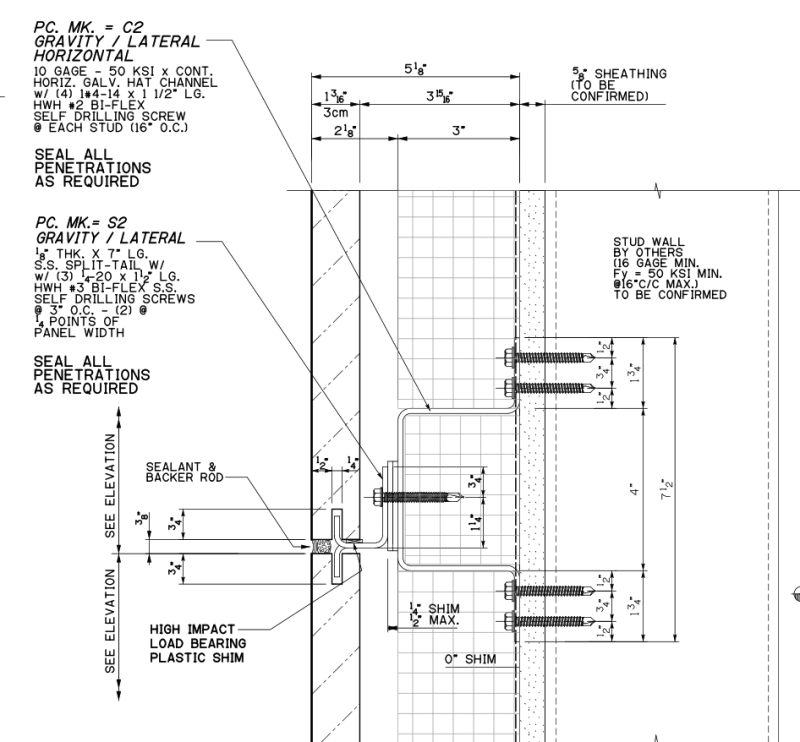canadiancastor
Structural
- Apr 13, 2014
- 34
I have a project where we are using an aluminum substructure to attach granite panels (rainscreen building enveloppe). The aluminum substructure is attached to the building stud wall, which has studs at 16" O.C. and spans concrete slab to concrete slab. The substructure is attached with local aluminum angles at every 32" O.C. horizontally and at every 39" O.C. vertically. All of the dead load of the system and of the granite panels is transferred at every concrete slab (they substructure is "hung" off the slab face), so the steel studs only serve as a backing to resist wind loads. The criteria used for the maximum deflexion of the studs is H/600.
The stud wall sub-contractor did not take into account that we had clips a 32" o.c. and designed his wall for the standard wind loads. I am suggesting to simply double every stud, that way even if we don't know exactly which stud will be loaded, it will be able to withstand twice the load, which is the loading if we have clips @ 32" o.c.. There is the issue where the studs is also point loaded vertically, but I ran an analysis with the exact spacing of the loads, and using a distributed vertical load is conservative.
His engineer does not accept the solution I proposed above. He says that we cannot simply load half of the studs. If one stud deflects to L/600 and the next stud does not deflect, there will be a large difference between the deflection of adjacent two adjacent studs. Is this a valid point? I'm thinking maybe, but at the same time I used built-up wood studs to resist a point loads on many occasions without issue? There is a gypsum sheeting on each side of his stud wall, does that distribute the load over 16"?
The stud wall sub-contractor did not take into account that we had clips a 32" o.c. and designed his wall for the standard wind loads. I am suggesting to simply double every stud, that way even if we don't know exactly which stud will be loaded, it will be able to withstand twice the load, which is the loading if we have clips @ 32" o.c.. There is the issue where the studs is also point loaded vertically, but I ran an analysis with the exact spacing of the loads, and using a distributed vertical load is conservative.
His engineer does not accept the solution I proposed above. He says that we cannot simply load half of the studs. If one stud deflects to L/600 and the next stud does not deflect, there will be a large difference between the deflection of adjacent two adjacent studs. Is this a valid point? I'm thinking maybe, but at the same time I used built-up wood studs to resist a point loads on many occasions without issue? There is a gypsum sheeting on each side of his stud wall, does that distribute the load over 16"?

